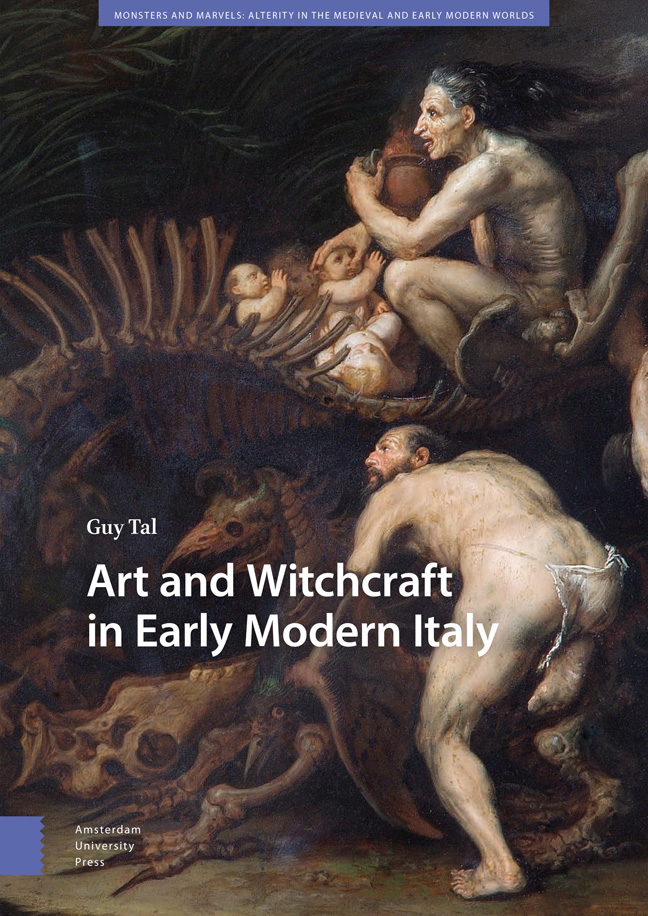Book contents
- Frontmatter
- Contents
- List of Illustrations
- Acknowledgments
- Introduction
- 1 Old Women under Investigation: The Drab Housewife and the Grotesque Hag
- 2 Chimerical Procession: The Poetics of Inversion and Monstrosity
- 3 Priapic Ride: Gigantic Genitals, Penile Theft, and Other Phallic Fantasies
- 4 Magical Metamorphoses: Variations on the Myths of Circe and Medea
- 5 A Visit from the Devil: Horror and Liminality in Caravaggesque Paintings
- Epilogue
- Bibliography
- Index
4 - Magical Metamorphoses: Variations on the Myths of Circe and Medea
Published online by Cambridge University Press: 22 February 2024
- Frontmatter
- Contents
- List of Illustrations
- Acknowledgments
- Introduction
- 1 Old Women under Investigation: The Drab Housewife and the Grotesque Hag
- 2 Chimerical Procession: The Poetics of Inversion and Monstrosity
- 3 Priapic Ride: Gigantic Genitals, Penile Theft, and Other Phallic Fantasies
- 4 Magical Metamorphoses: Variations on the Myths of Circe and Medea
- 5 A Visit from the Devil: Horror and Liminality in Caravaggesque Paintings
- Epilogue
- Bibliography
- Index
Summary
Abstract: Greco-Roman literature played a significant role in formulating the early modern idea of the witch. Analyzing works produced mainly by Florentine, Bolognese, and Genoese artists between 1550 and 1650, this chapter argues that Italian artists reinforced the association of ancient witches with the new concept of witchcraft by subverting and obscuring the reality, methods, and intentions of the sorcery performed by Circe and Medea. First, artists refuted the reality of transformation by presenting Circe as an exemplar of contemporary medical theories concerning delusional witches. Second, artists rendered Circe's transformation of Ulysses's comrades amusingly absurd by emphasizing the visual resemblance between figures undergoing metamorphosis and hybrid creatures. Third, artists portrayed Medea as a malignant witch by obscuring the benign nature of her rejuvenation of Aeson.
Keywords: Ulysses, Aeson, transformation, rejuvenation, melancholy, delusion, hybrid
Circe and Medea, the two most celebrated witches of the Greco-Roman tradition, were frequently depicted throughout Renaissance and Baroque Italy in fresco cycles, paintings, majolica ware, cassone panels, emblematic illustrations, prints, and drawings. In keeping with their descriptions in classical texts, Italian artists portrayed both witches as beautiful young women, and focused on their magical ability to manipulate men's forms through their pharmaceutical knowledge of herbs and drugs, exemplified particularly by Circe's metamorphosis of Ulysses's comrades into various beasts and Medea's rejuvenation of her father-in-law Aeson. What significance did these images hold in developing the early modern idea of witchcraft?
The prevalence of female witches, young and old, in antiquity reinforced the early modern conviction about women's culpability in witchcraft. In their activities, Circe, Medea, Simaetha, Erichtho, Pamphile, Meroe, and Canidia, among other witches, echoed the early modern stereotype of the witch: they committed infanticide, transformed men into animals, shapeshifted into birds, reanimated the dead, concocted magical brews out of herbs and body parts, performed incantations and nocturnal rituals, and bragged about their ability to invert the natural order. Considering ancient witches as historical figures, demonologists then used these classical accounts to adduce evidence of various supernatural powers. As the classical witches par excellence, Circe and Medea became synonymous with streghe. Gianfrancesco Pico della Mirandola complains in his Strix (1523) that the ancients had only three or four celebrated witches, Medea, Canidia, and Erichtho, whereas today one can find six hundred Medeas in one city and twelve thousand Circes in another.
- Type
- Chapter
- Information
- Art and Witchcraft in Early Modern Italy , pp. 189 - 252Publisher: Amsterdam University PressPrint publication year: 2023



